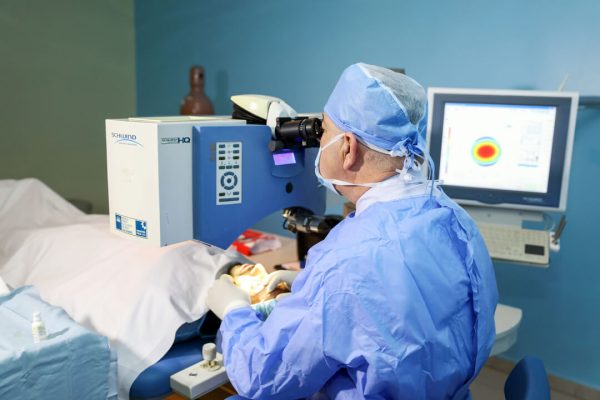Hearing aids are invaluable devices that have revolutionized the lives of millions of people with hearing impairment. However, like any electronic device, they are susceptible to issues that may arise with regular usage. Understanding how to troubleshoot common hearing aid problems, when to seek professional repairs, and implementing preventive maintenance can ensure your hearing aids serve you optimally for years to come. This article explores practical tips and solutions to keep your hearing aids in top-notch condition, providing you with a seamless hearing experience.
Troubleshoot Common Hearing Aid Issues: Addressing Common Problems
Hearing aid users may occasionally encounter various issues that can disrupt their hearing experience. Here are some common problems and their possible solutions:
Low or No Sound Output: If you notice a decrease or absence of sound from your hearing aid, the battery may be low or depleted. Try replacing the battery and check if the sound returns to normal. If the problem persists, check for clogged microphones or blocked sound vents and gently clean them with a brush or a soft cloth.
Whistling or Feedback: Hearing aid feedback occurs when sound leaks from the ear canal and gets picked up by the microphone, causing an annoying whistling sound. This can be due to improper fitting or earwax buildup. Ensure your hearing aid fits snugly and consult your audiologist for readjustment if needed. Additionally, regular ear cleaning to remove excess earwax can prevent feedback issues.
Inconsistent Volume Control: If your hearing aid’s volume control is inconsistent or not responding, check for dirt or debris that may be obstructing the control wheel. Use compressed air to blow away any particles, but be cautious not to apply excessive force.
Distorted or Muffled Sound: Distorted or muffled sound can be caused by blocked sound tubes or a damaged speaker. Follow the manufacturer’s instructions to replace the sound tubes or consult a professional for repair if necessary.
When to Seek Professional Help for Hearing Aid Repairs
While some minor issues can be addressed through troubleshooting, there are instances where professional assistance becomes necessary. If you encounter any of the following problems, it is best to seek help from an experienced hearing aid specialist:
Physical Damage: If your hearing aid is visibly damaged due to dropping or exposure to moisture, do not attempt to repair it yourself. Take it to a professional as DIY attempts may worsen the damage.
Internal Malfunctions: If the hearing aid’s electronics or internal components are malfunctioning, it requires specialized equipment and expertise to diagnose and fix the issue.
Persistent Problems: If you’ve attempted to troubleshoot common issues without success and the problem persists, it’s time to consult a professional for a thorough examination and repair.
Warranty Coverage: If your hearing aid is still under warranty, attempting DIY repairs may void the warranty. It’s better to rely on the manufacturer’s authorized service centers for any repairs during the warranty period.
Preventing the Need for Repairs: Maintaining a Clean Hearing Aid
Regular maintenance and proper care can significantly reduce the frequency of hearing aid repairs. Here are some essential cleaning tips:
Daily Cleaning Routine: Develop a daily cleaning routine for your hearing aids to remove earwax, debris, and moisture. Use a soft, dry cloth to wipe the surface of the hearing aid, microphone, and sound vents. Avoid using water, cleaning solvents, or alcohol, as they can damage the sensitive components.
Invest in Cleaning Tools: Consider investing in specialized cleaning tools like a wax pick or brush provided by your hearing aid manufacturer. These tools can help you clean hard-to-reach areas effectively.
Store Properly: When not in use, store your hearing aids in their protective case or a dry, cool place. Avoid leaving them in direct sunlight or high-temperature environments.
Also, Keep Your Ears Clean: Ear Hygiene for Optimal Hearing
Apart from cleaning your hearing aids, it is essential to maintain clean ears to prevent earwax buildup and other hearing issues. Here are some ear hygiene tips:
Avoid Q-Tips: Refrain from using cotton swabs or Q-tips to clean your ears, as they can push the earwax deeper and lead to blockages.
Use Ear Drops: If you are prone to excessive earwax, use over-the-counter ear drops to soften the wax, making it easier to remove.
Schedule Professional Cleaning: Regularly visit an audiologist or healthcare professional to have your ears checked and professional ear cleaning.
Lastly, Keep Hearing Aids Dry: Preventing Moisture Damage
Moisture is one of the most common causes of hearing aid issues. Excessive moisture can damage the delicate electronic components and affect the overall performance of the hearing aid. Follow these tips to keep your hearing aids dry:
Use a Dehumidifier: Invest in a hearing aid dehumidifier or drying kit to remove moisture from your hearing aids overnight.
Avoid Water Exposure: Remove your hearing aids before showering, swimming, or engaging in water-related activities.
Taking care of your hearing aids through proper maintenance, troubleshooting common issues, and seeking professional help when necessary can significantly extend their lifespan and improve your overall hearing experience. Regular cleaning, keeping your ears clean, and protecting your hearing aids from moisture are essential steps towards preventing the need for frequent repairs. With these measures, you can ensure that your hearing aids remain reliable companions in enhancing your hearing and quality of life.





